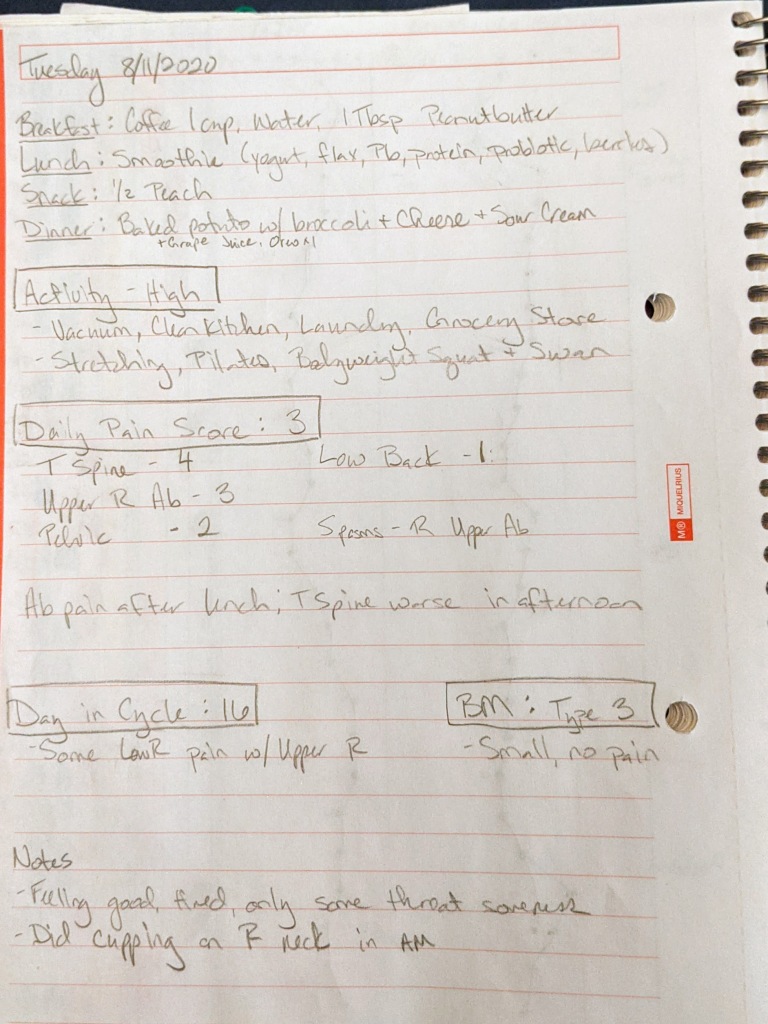One of the worst things about endometriosis (besides the pain) is how little is known about this disease. Researchers don’t really know what causes it, and doctors don’t have many good answers when it comes to treating it. Period tracking is one way to learn about your cycle and make more informed choices for yourself.
Getting to a positive diagnosis is bad enough, and many of the symptoms that are widespread among endo patients – like GI pain – are not commonly recognized as part of the endo experience. Even the most hallmark symptom – severe menstrual pain – is often dismissed as normal.
It can even be tough to recognize endo symptoms within our own bodies! Given the cyclic nature of endometriosis, symptoms seem to mysteriously appear and disappear. With so little information available, it’s easy to wonder if new symptoms are endo-related or not. This leaves a lot of patients in the dark about what is going on with their bodies, and what kind of treatment they may need.
Whether you’re new to your endo journey or not, tracking your periods and symptoms can be a powerful tool to help you understand your body and your symptoms. The information that tracking provides will help you make choices about your diet, lifestyle, or medical treatments.
Depending on your symptoms and needs, you could track menstruation, ovulation, and sexual activity. Since diet can play a big part in endo pain, tracking food intake and exercise can help you see patterns and cycles. I have learned so much about my cycle by tracking, and it is so much easier to see what I can change when pain starts creeping up.
There are very few one-size-fits-all answers for endometriosis, and it can often feel like taking shots in the dark to try and find some relief. When I started to track my diet, I noticed I had a lot of dairy, sugar, and carbs from beans. I was having pretty intense GI symptoms, so I cut out dairy, reduced sugar, and traded in a couple of servings of beans each week for chicken.

In the past year, I’ve also learned to not do all of the chores on the same day.
I prefer to use a notebook and pencil, but if an app would work better for you, that’s great! The best method to track your symptoms is the one you can stick with. It does require setting aside time throughout your day to jot down notes, but it’s worth it.
*Paper and pencil also provides protection for your data from cell phone carrier and app developers, which is a lot more important post- Roe.
Tracking can also help at your doctor’s appointments. You’ll have a better understanding of your own symptoms, how they impact your life, and what you’ve tried. Having a physical notebook (if you go that route) can also indicate to your doctor that you’re serious about your symptoms. This can backfire, though, and doctors can see this level of note taking as a sign of obsessiveness and anxiety. That’s a sign for you to get a new doctor.
On the whole, symptom tracking has been one of the most helpful tools I’ve picked up to help manage my endo. If you would like to get started, check out the links below to get you going. Ultimately, it doesn’t matter what your tracking system looks like, as long as it works for you!
Here’s How to use a Bullet Journal for Better Mental Health from Buzzfeed.com
29 Bullet Journal Layouts for Anyone Trying to be Healthy from Buzzfeed.com

One thought on “Endometriosis 101: Period Tracking”